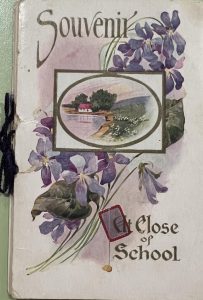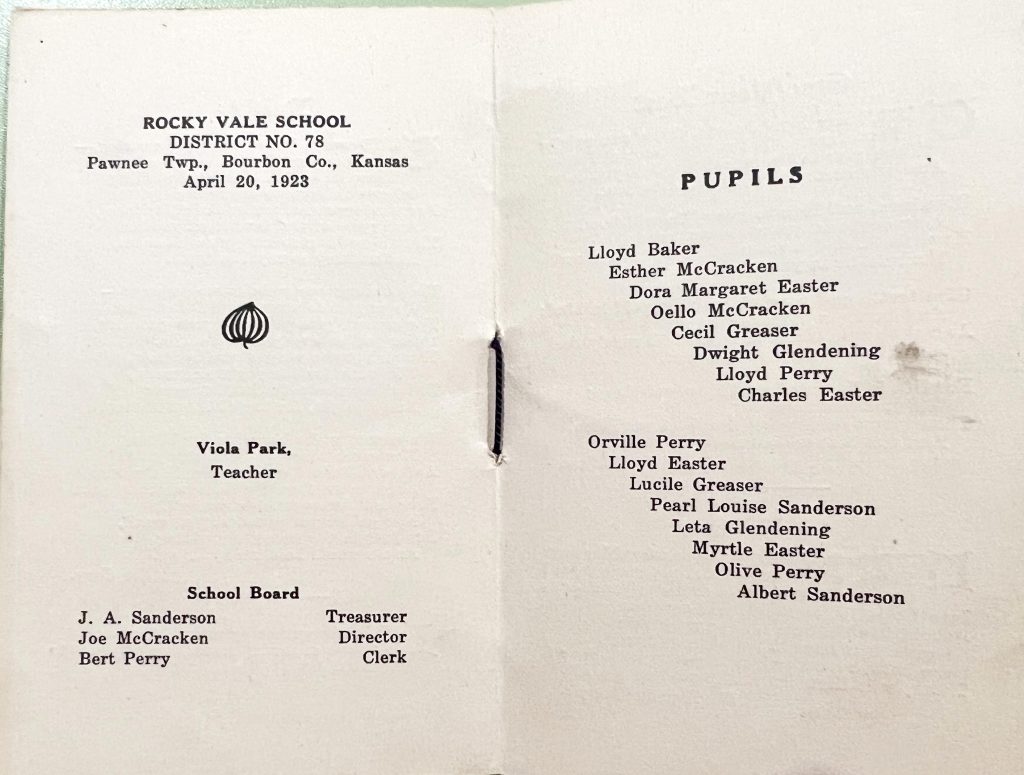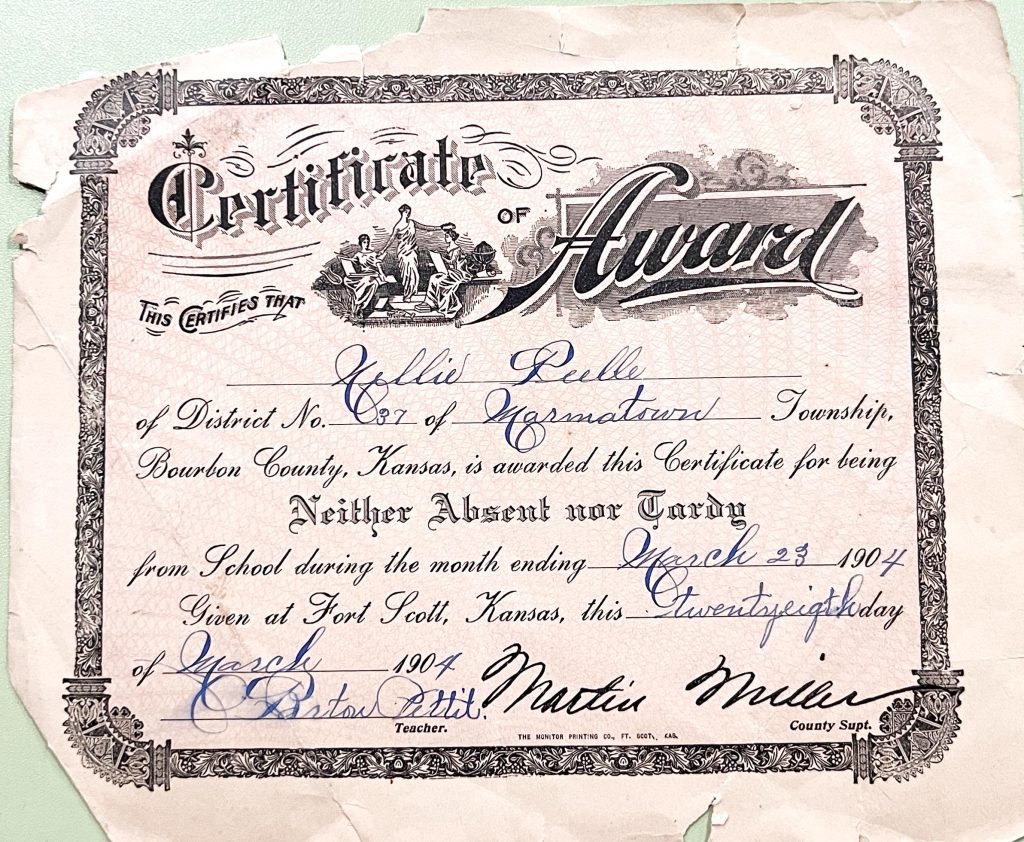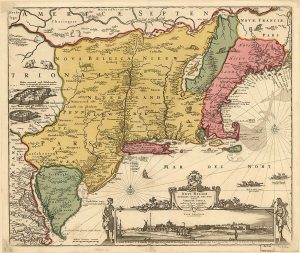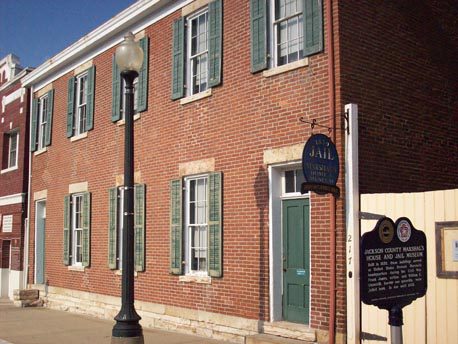
In earlier years of our country, the call to serve the country often was given to groups of men in various locations. Thus, it was not uncommon for neighbors and even family members to serve together. In this case, two brothers served in the same company.
 The Brothers
The Brothers
It was September 9, 1861 when William M. Matteer and his younger brother Francis Marien Matteer, brothers of my great-great grandmother Louisiana (Matteer) McCracken, enlisted in the Union Army. William was not quite 22 and Francis was 20.
Although living in the southeast corner of Iowa in Lee County, the Matteer brothers signed up with the Missouri Calvary at Warsaw, Illinois, a distance of about 20 miles from their home. By December 31, the brothers were at Hudson City in Captain Hackney’s Company in the Black Hawk Cavalry.
Service
The Black Hawk Cavalry had been organized between November 14 and December 31, with many of the men from southeast Missouri. They saw action at Spring Hill on October 27 and did an expedition in mid-December. Early in 1862, units merged and the brothers were both privates in Company D of the 7th Missouri Cavalry.
In May and June, William and Francis were not with their unit as they were on a scouting mission. When an accounting of the soldiers was done in July, the brothers had returned to their unit. That month, the 7th Regiment did an expedition in Cass County, Missouri July 9 – July 11. By July 23, some members of the regiment were engaged in a skirmish at Columbus near Warrensburg, Missouri. By early August, the regiment was in Independence.
Preparation For Battle
In August 1862, the leaders of the Union Army in Independence, Missouri knew that the Confederates were nearby. Lt. Col. Buel sent a patrol to locate the Confederates, which were at Lee Summit, in preparation for an attack on the rebels. Now, if they had taken a look from the top of the Independence Court House, they would have known exactly where the enemy was located, as the Confederates had hoisted their flag up on a pole and it could easily be seen. However, it is unclear the extent of information the Union soldiers collected about the Confederates.
The rebels, worried that if they didn’t quickly attack Independence that the Union soldiers would get the upper hand by attacking them, started their own preparations for attack. Thanks to Quantrill and his guerrillas, the Confederate forces were quite successful in learning about the Union forces in Independence. Dressed as civilians, they came into the town, walked around freely, and learned the location of all the Union forces.
Surprise Attack At Independence
Despite warnings by locals that the Confederate forces were going to attack, on the evening of August 10, 1862, the Union leaders did not see the need to post mounted pickets to watch the enemy and give warning of an attack. This proved to be a mistake of huge proportions.
In the pre-dawn hours of August 11, while many of the Union soldiers were asleep in their tents, a multi-pronged attack was launched on Independence. The union officers were, not only caught completely by surprise, but also had located their headquarters, primary quarters for soldiers, and many of the weapons in a way that made a quick response difficult.
For instance, Lt. Col. Buell’s headquarters were in the Southern Bank building, ½ – ¾ a mile from the main soldiers’ quarters. The Provost Marshal was headquartered in the jail some blocks away. Other leaders were also spread out, such that communication during the attack became nearly impossible. In addition, the location itself did not offer protection except buildings, trees, and a half-mile long stone fence..
The Fight for Independence
Some of the men were killed and wounded in the initial attack on the sleeping soldiers. However, while the Confederate soldiers looted the camp, one of the captains pulled his men together behind the stone fence and began to put up a fight.
Another group of rebels were in the center of town near Lt. Col. Buel’s headquarters before sentries opened fire on them. Their captain pulled his men together and began to fight. Still, the enemy forces were able to repeatedly attack the bank building.
Within a few hours, the Confederate forces had trapped Lt. Col. Buel in the bank building and captured the jail where the Provost Marshal was headquartered. How exactly the latter location was taken isn’t clear, but one account stated that the rebels used deception and men claimed loyalty to the Union cause to gain access to the building.
At this point, the Confederate troops made multiple attempts to make progress against the Union soldiers. However, each attempt failed. One of the Captains was planning to move his men closer to the Lt. Col. to try to free him. However, the Quantrill threatened to burn the building next to the bank to force Lt. Col. Buel and those with him out into the open. With this threat and the knowledge that he would not hesitate in doing so even if the Confederate leaders objected, the Lt. Col. Began negotiating a surrender.
The deal included the surrender of all the Union forces in Independence. They would be prisoners of war, but would not be handed over to Quantrill and his men, who were known for violence against Union sympathizers.
 Surrender
Surrender
Thus, the Union commander gave the signal to surrender. About 150 Union soldiers surrendered. One company avoided capture by breaking through and escaping. Others also managed to escape capture by hiding or fleeing the area. Most of the captured soldiers were very quickly paroled by giving their word that they would not fight any more.
The exact number of dead and wounded on each side seems to be a matter of debate. However, somewhere around 30 – 40 men on each side were killed, including William Matteer. Around 75 of the Union troops were injured during the attack. Francis Matteer was taken as a prisoner of war after receiving a gunshot wound in his arm.
The biggest win for the rebels was that they filled 20 wagons with arms, 200,000 rounds of ammunition, and other goods. They also took possession of 300 horses and 65 mules.
Defenses Up!
Meanwhile in Wyandotte County, Kansas, the news of the battle in Independence arrived. Businesses closed, even saloons, allowing men to prepare to defend the area. Upon the news, the mayor asked all the able-bodied men to meet at the post office with their weapons.
General Lane even came to speak, creating one of the largest gatherings in the county at that time. He spoke for almost two hours about the danger the area faced from the rebels. He reinforced the idea that the local people were going to have to defend the area as they could not count on the government to be able to do it.
The mayor also called for reinforcements from Leavenworth. Lt. Col. Burris brought four infantry companies and three cavalry companies to assist the locals in defending the area. Major Ransom also brought his troops.
At the same time that people in Wyandotte County were taking arms to protect themselves, the commander at Kansas City, Missouri was asking them to come to Missouri to help protect the city. Some men were sent to Kansas City, Missouri. Others were posted as guards at various locations, particularly near river crossings. And, everyone was informed that the alarm signal was the ringing of the Congressional Church Bells.
It was two years, however, before a big battle came knocking on their door. The Battle of Westport (now a neighborhood in Kansas City, Missouri) was a big one. It is sometimes called the Gettysburg of the West. And, it led to the Battle of Mine Creek.

 Life After The Battle
Life After The Battle
Suffering from his wound, Francis was discharged at St. Louis, Missouri on September 30, 1862 per special order 88 dated August 25, 1862. On June 17 of the following year, Francis filed for a pension with the government over his disability.
In 1864, Francis married Cordelia (Gorgas) Dufer. Cordelia’s first husband Charles F. Dufer had also been in the Civil War, having served with the 15th Regiment. He had been wounded in the shoulder at Shiloh, Tennessee on April 6, 1862. He was discharged a few days later due to his injury. However, he appears to have died within a matter of months. Interestingly, Charles Dufer was a brother to Sarah Dufer, who was Lemuel McCracken’s first wife.
Francis and Cordelia had five children, with three surviving infancy, before Francis died at age 33. Subsequent filings for a pension were made by Cordelia and by Francis’ father Mathias Matteer, who was guardian of Francis and Cordelia’s children.
I do not know if Francis’ death on September 16, 1874 was related to his injury at Independence or not. The location of Francis and William’s burials is unknown.
Image of the jail: Public Domain, Photographer ecjmartin1, July 26, 2008
 The Brothers
The Brothers Surrender
Surrender Life After The Battle
Life After The Battle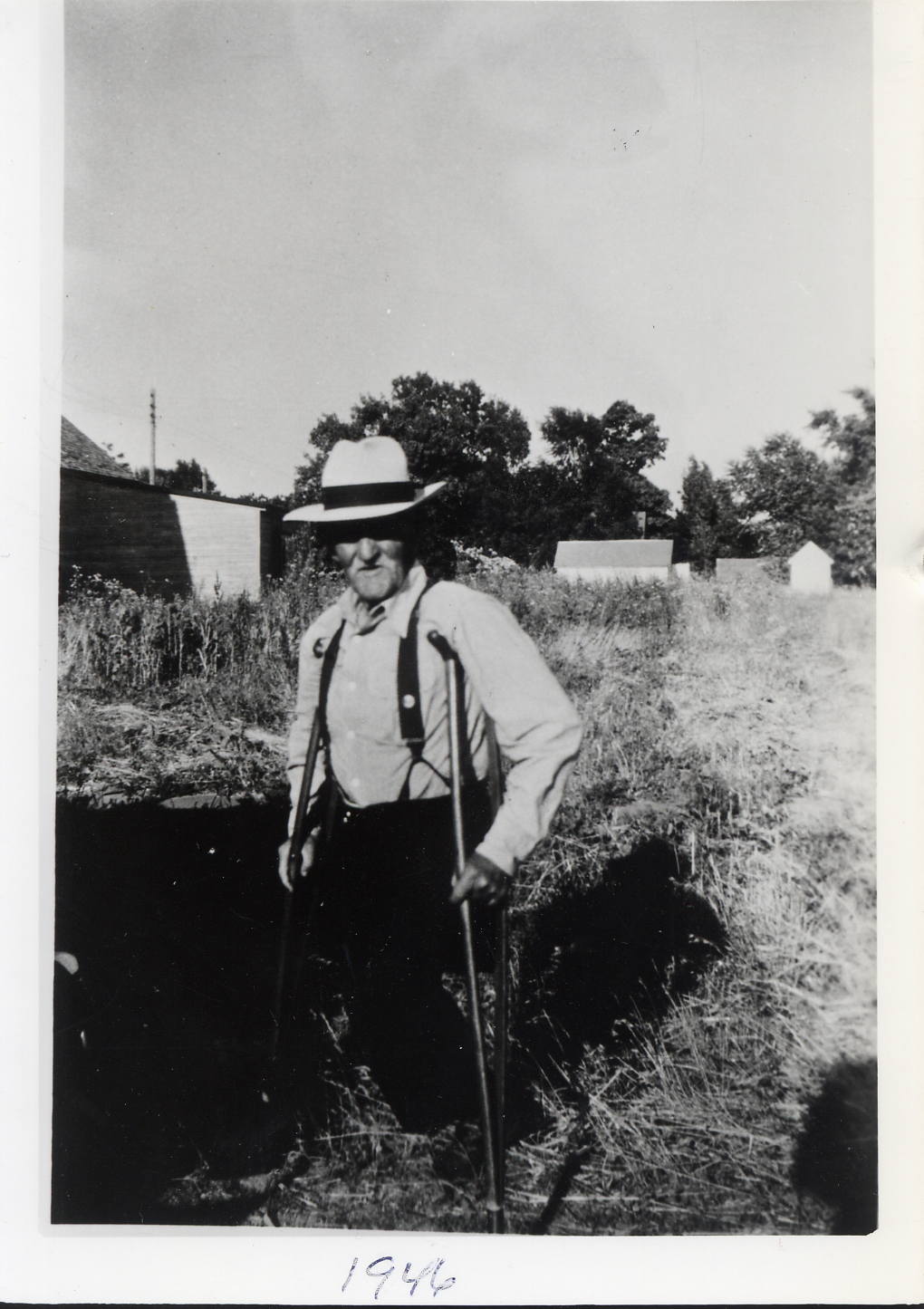
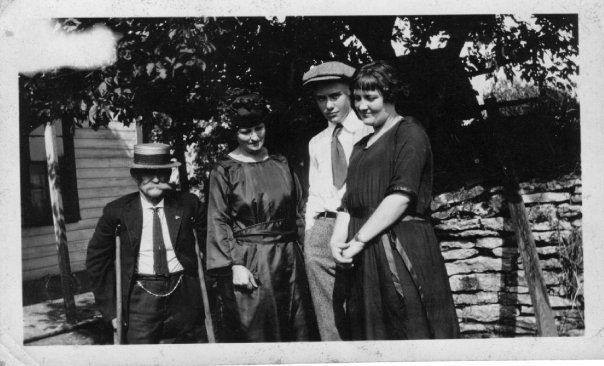
 Floating
Floating A Barber
A Barber Proprietor
Proprietor Landmark
Landmark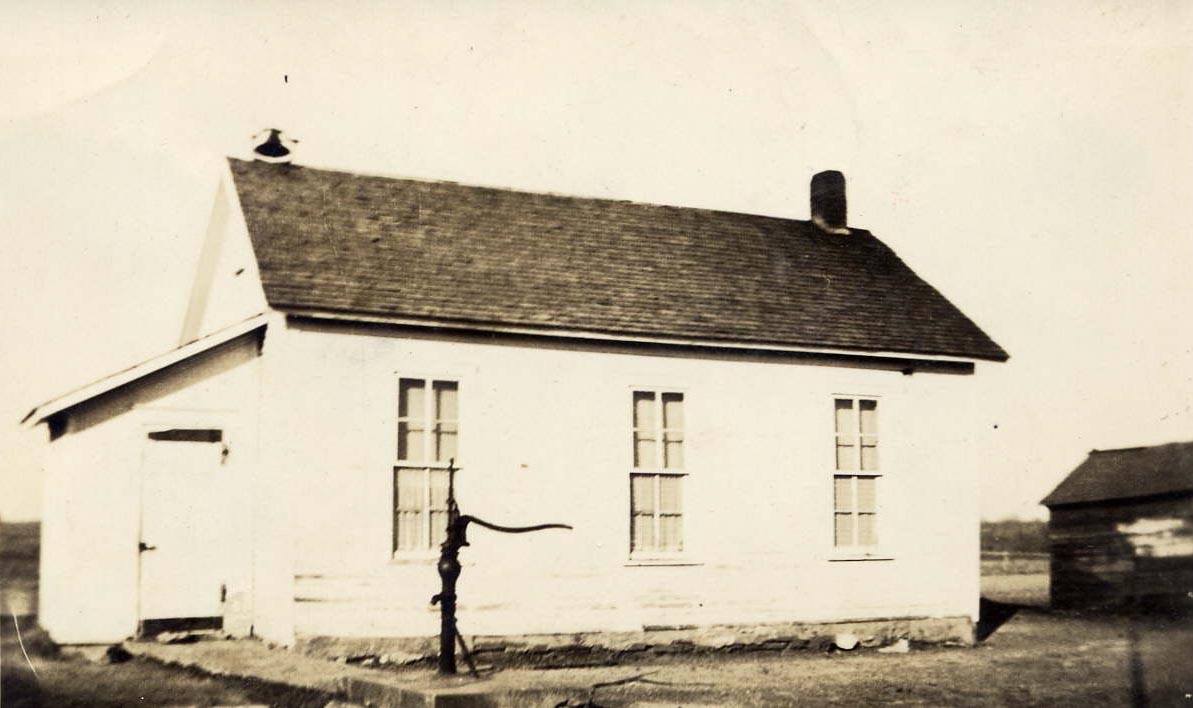
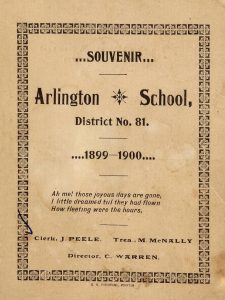
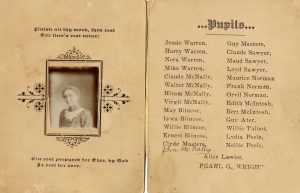

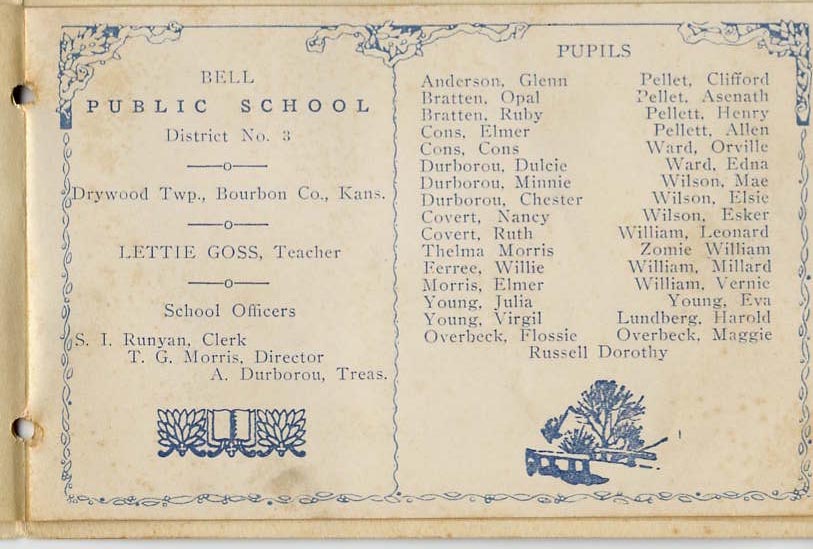
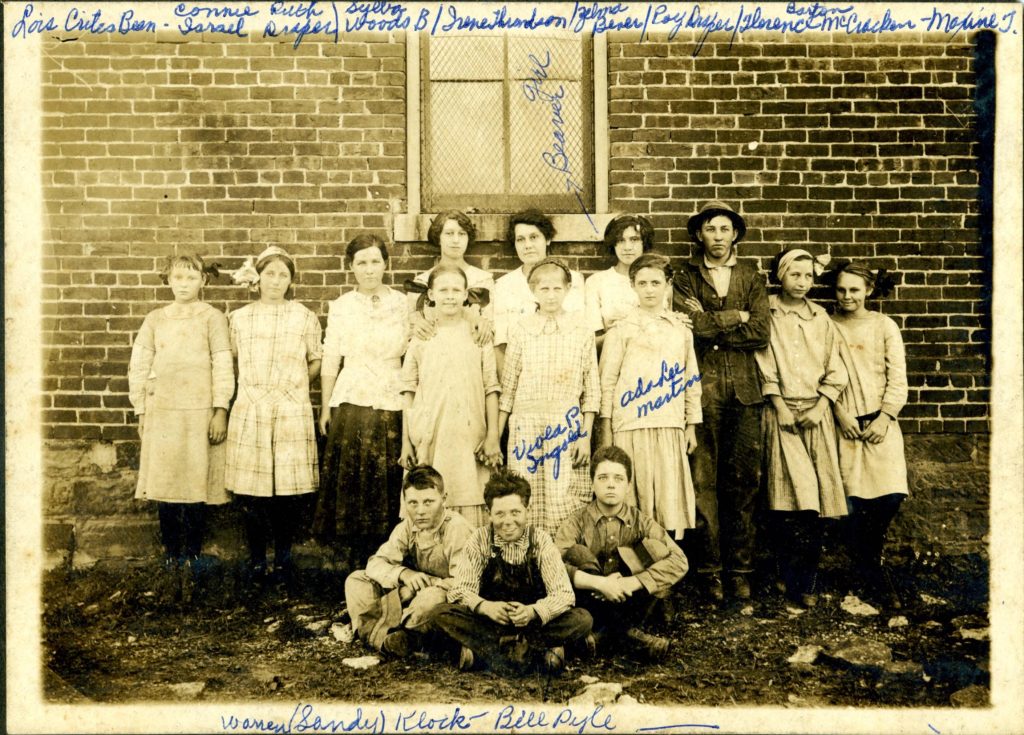
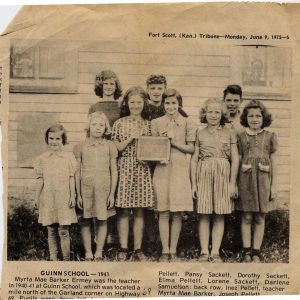
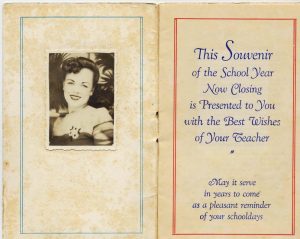
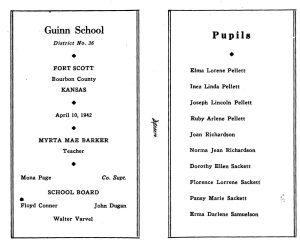
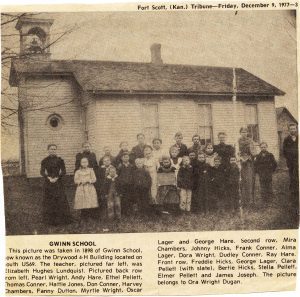
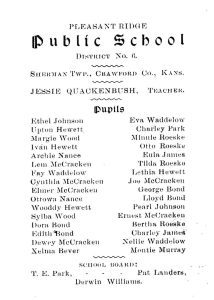
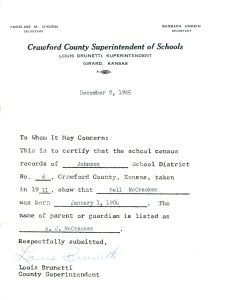
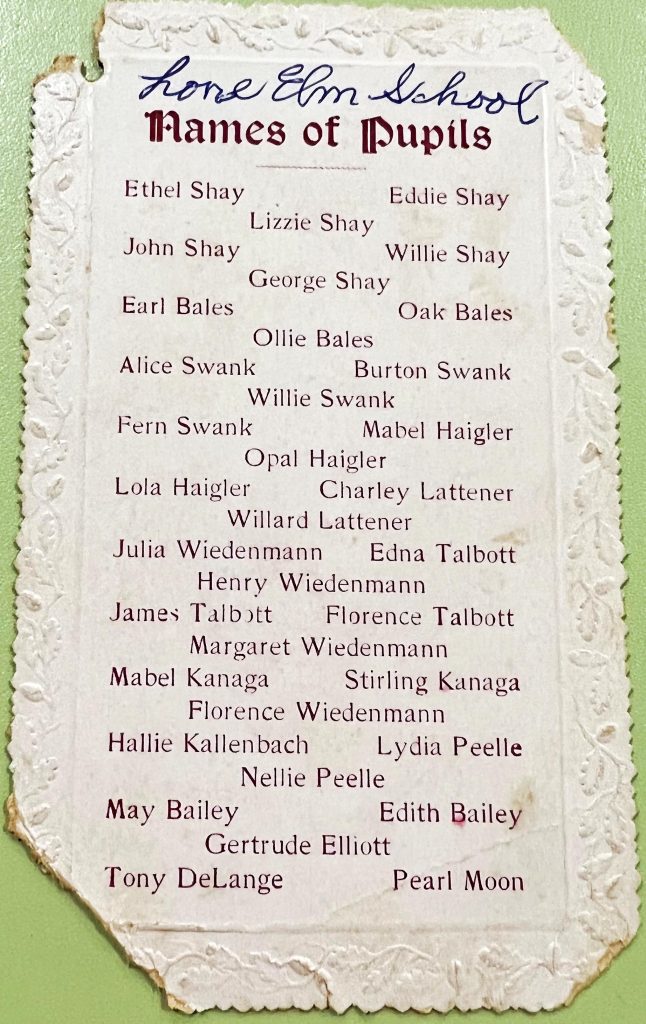 Lone Elm School
Lone Elm School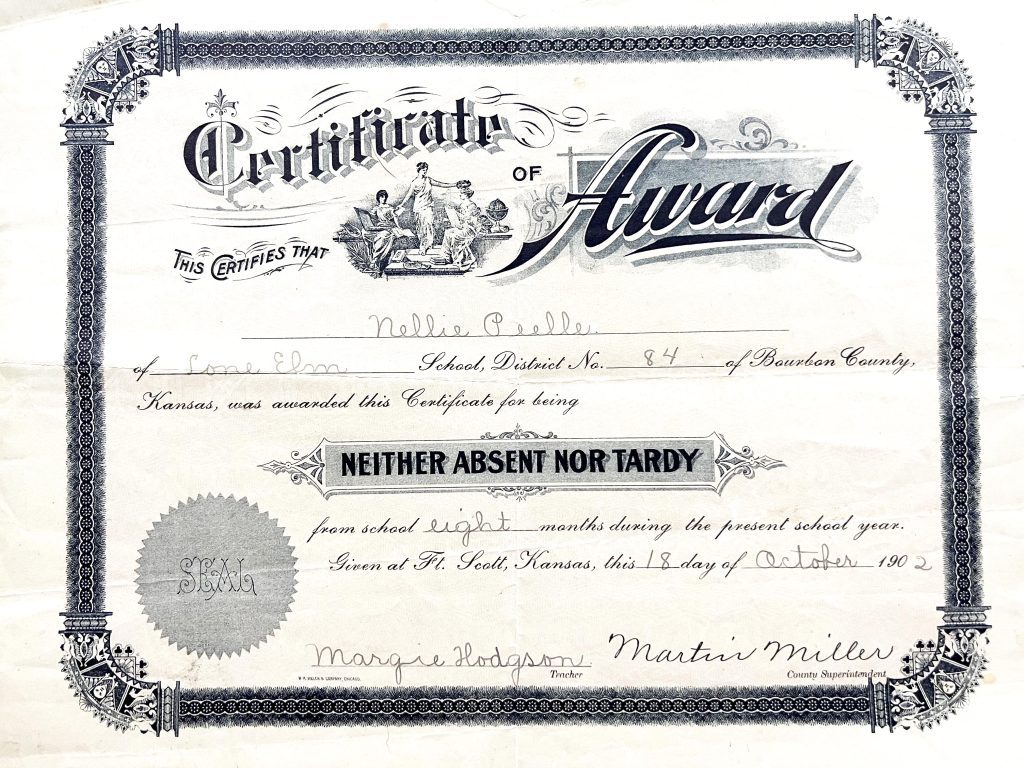
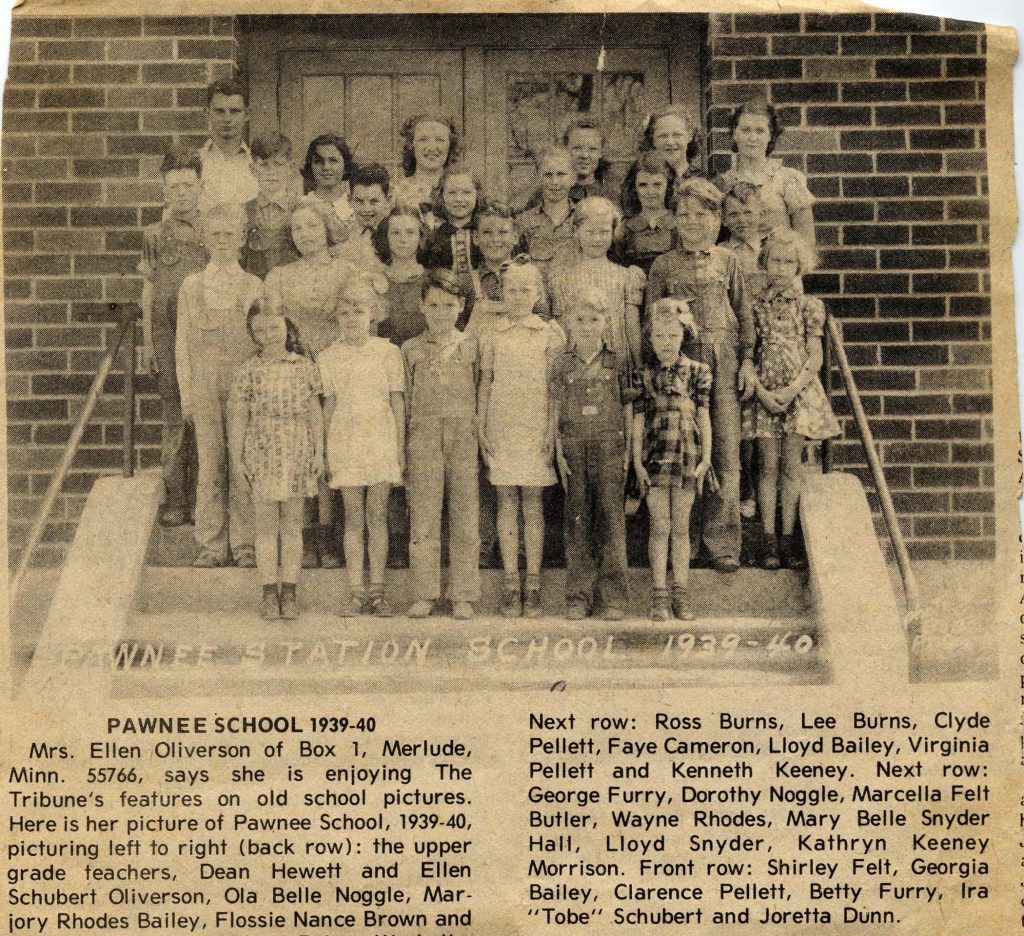
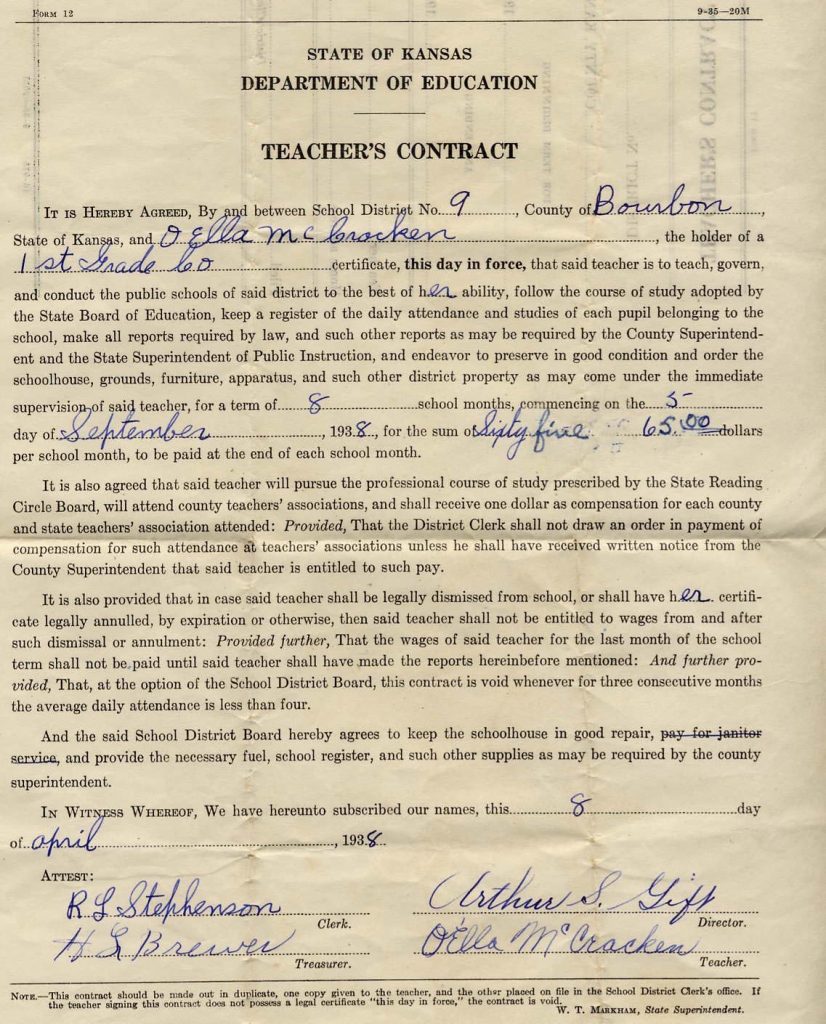
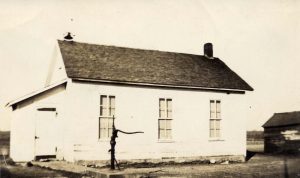
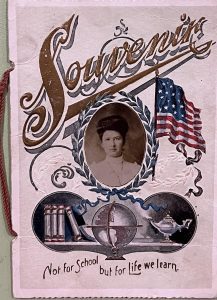
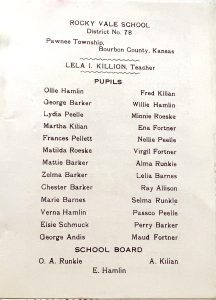
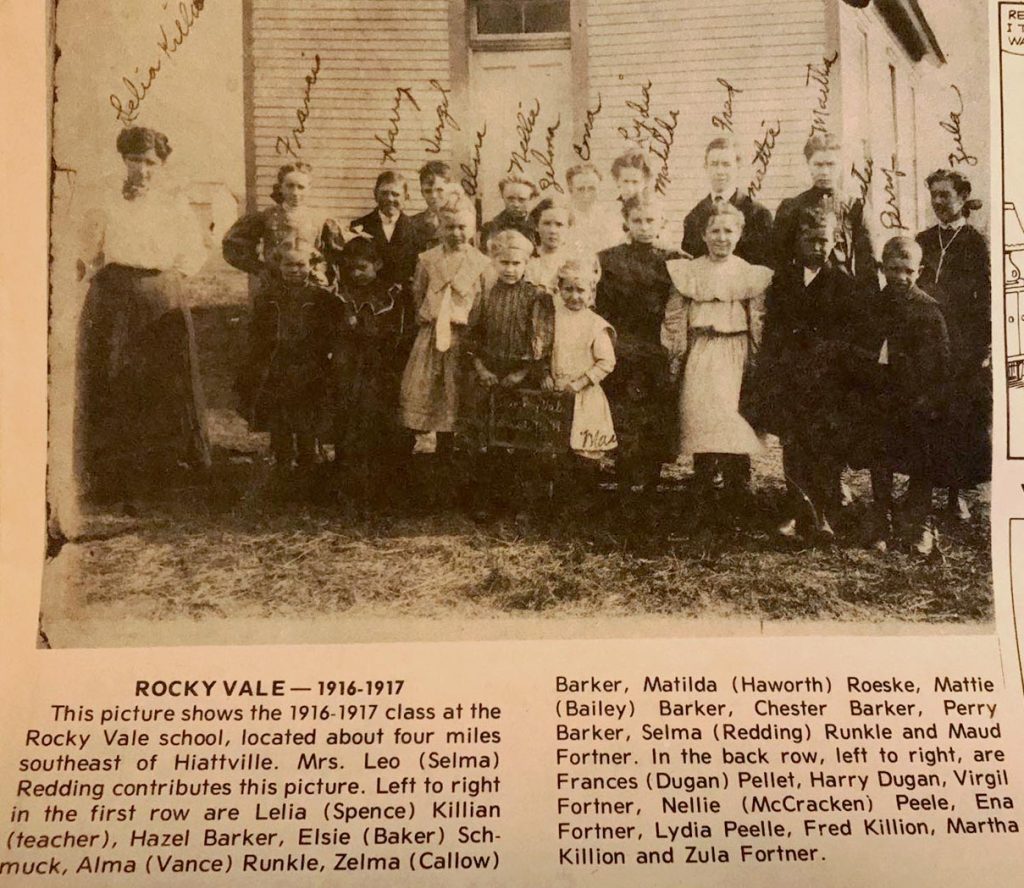
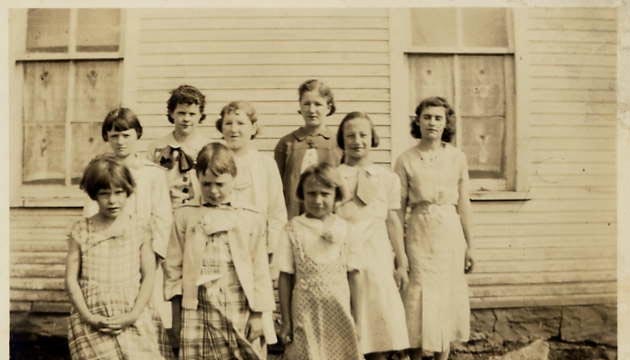
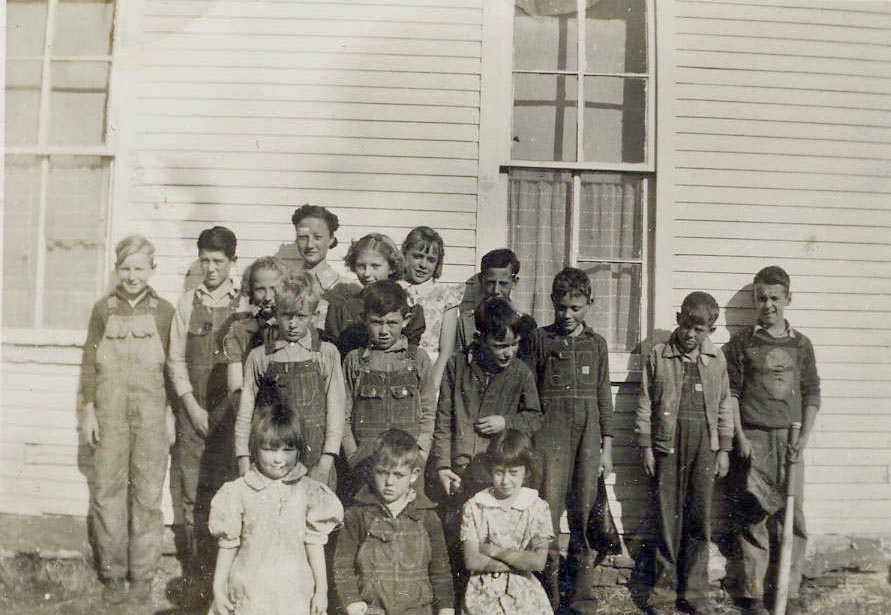
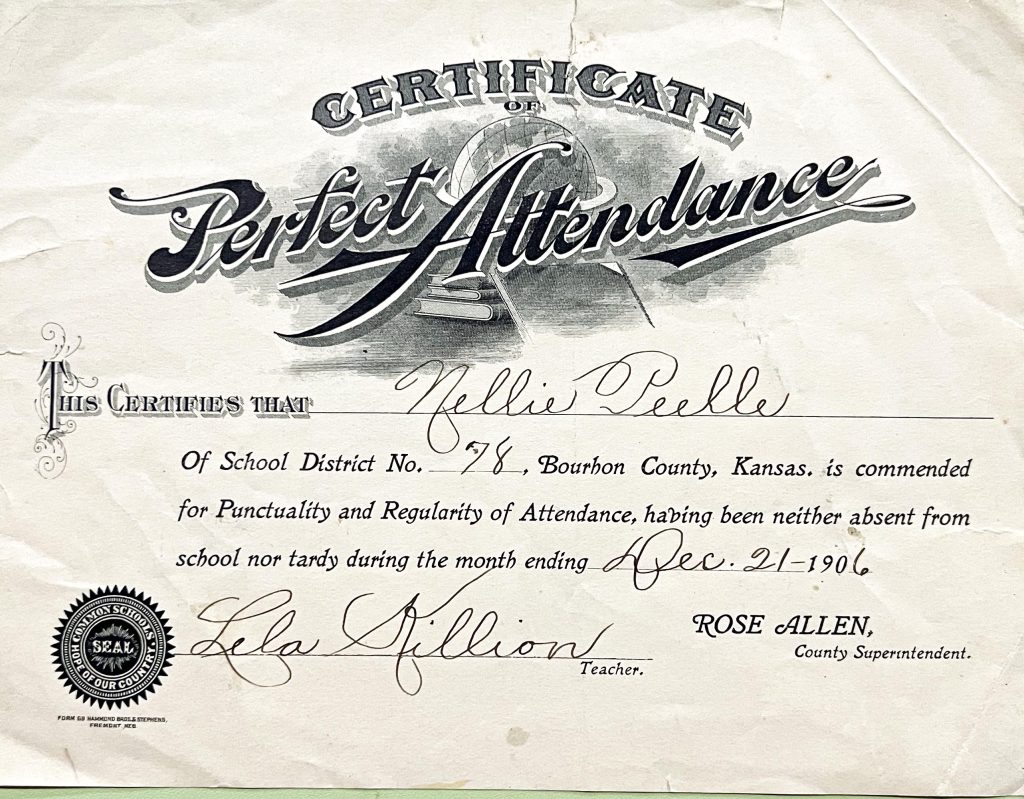 Later, O’Ella (McCracken) Ross, Dee (McCracken) Burnam, and Don McCracken all taught at Rocky Vale. O’Ella taught at the school 1933-1935. Dee only taught there one year in the 1940s.
Later, O’Ella (McCracken) Ross, Dee (McCracken) Burnam, and Don McCracken all taught at Rocky Vale. O’Ella taught at the school 1933-1935. Dee only taught there one year in the 1940s.